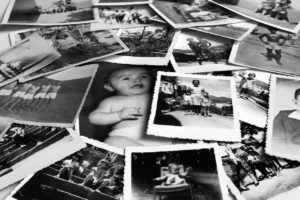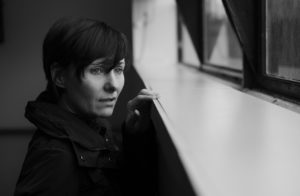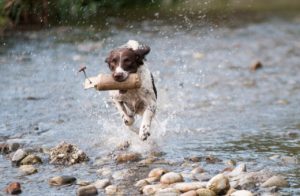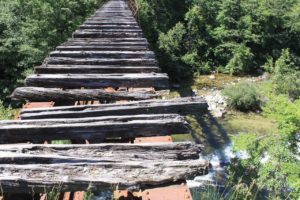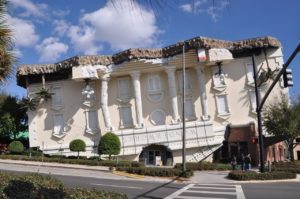Zavarzin, Andrey Nikitovich
- このトピックは空です。
-
投稿者投稿
-
monroeblohm
ゲスト<br>
<br>Andrey Nikitovich Zavarzin (1919-1995) – Soviet soldier. Member of the Great Patriotic War. Hero of the Soviet Union (1945). Colonel.<br>Biography<br>Andrey Nikitovich Zavarzin was born on April 2, 1919 in the village of Lyubimovka in the Bogoroditsk district of the Tula province of the RSFSR (now the village of the Volovsky district of the Tula region of the Russian Federation) into a peasant family. Russian. He graduated from a seven-year rural school. In 1935-1938 he studied at the 5th Moscow Pedagogical School.<br><br>He was drafted into the ranks of the Workers ‘and Peasants’ Red Army on August 25, 1938. In August 1939 he graduated from the 2nd Moscow Artillery School, and in October 1940 – the Tomsk Artillery School. He served as a fire platoon commander in the artillery regiment of the 167th Infantry Division of the Western Special Military District, then was the assistant chief of staff for the reconnaissance regiment. Before the war, the division was based in the Gomel region of the Byelorussian SSR. With the beginning of the Great Patriotic War, the unit in which A. N. Zavarzin served, became part of the 63rd Rifle Corps of the 21st Army of the Western Front. On July 26, 1941, divisional units took up defensive positions on the Rogachev-Zhlobin line. Andrei Nikitovich received his baptism of fire at dawn on July 2, 1941, near the city of Rogachev, in a battle against the 3rd Panzer Division of the Wehrmacht.<br><br>In the period from July 3 to August 13, 1941, the units of the 63rd Rifle Corps staunchly held their positions, but the Germans managed to break through in neighboring areas, as a result of which the corps was surrounded. Only a few units broke through from the cauldron. Among those who left the encirclement was A. N. Zavarzin. After checking with the NKVD in November 1941, he was sent to the 635th Infantry Regiment of the 143rd Infantry Division of the 13th Army of the Southwestern Front, where he was appointed platoon commander of a battery of 76-mm guns. Since November 1941, the 13th Army fought defensive battles in the Voronezh direction, then defended the places native to Zavarzin – Efremov and Volovo. With the start of the counteroffensive near Moscow, the 13th Army units went on the offensive. Andrey Nikitovich took part in the Yelets operation. From December 24, 1941, as part of the Bryansk Front, he participated in the liberation of the city of Livny.<br><br>In the spring of 1942, A. N. Zavarzin was appointed commander of a battery of 76-mm guns of the 635th Infantry Regiment. In a short time, Andrei Nikitovich conducted combat training, making his battery one of the best in the division. Zavarzin’s soldiers played an important role in repelling the large-scale German offensive that began on June 28, 1942 (the Voronezh-Voroshilovgrad defensive operation). The battery of Lieutenant A. N. Zavarzin already on the first day of the defensive operation destroyed up to two battalions of . At the critical moment of the battle for the village of Rosstani, Livensky District of the Oryol Region, while repelling an attack by numerically superior enemy forces, Andrei Nikitovich put his guns on direct fire and with hurricane fire put the enemy to flight, destroying up to 150 Wehrmacht soldiers and officers. In total, from June 28 to July 10, 1942, Zavarzin’s battery destroyed up to 300 German soldiers, 5 carts with ammunition and 10 vehicles with infantry. In the 13th Army’s defensive sector, the Germans failed to achieve significant success. At the beginning of 1943, in the course of the lines held near Livny, the army units went on the offensive during the Voronezh-Kastoren operation.<br><br>On March 13, 1943, the 13th Army was included in the Central Front and in the summer of 1943 participated in the Battle of Kursk. By this time, Andrei Nikitovich had gone from lieutenant to captain and was appointed chief of artillery of the 635th rifle regiment of the 143rd rifle division. In the battle on the Kursk Bulge during defensive battles, and then in the Oryol strategic offensive operation, the regiment’s artillery demonstrated high military skill, and Captain A.N. Zavarzin demonstrated skillful leadership of the unit and good organization of artillery interaction with the regiment’s rifle units. Especially the artillerymen of Zavarzin distinguished themselves in the battles west of Maloarkhangelsk for the villages of Petrovka and Semyonovka of the Maloarkhangelsk district of the Oryol region. When the enemy defenses were broken through by the fire of the regimental artillery, 10 enemy firing points were suppressed and destroyed up to a company of enemy infantry. Thanks to the skillful and well-coordinated actions of artillery batteries and rifle subunits, the regiment captured the line of German trenches with minimal losses. On July 17, 1943, in an area of an unnamed height two kilometers north of the village of Semyonovka, the enemy launched a counterattack three times, but Captain Zavarzin competently placed artillery crews and inflicted serious damage on him. In the course of the further offensive in the Krom area and in subsequent actions of the division as part of the 60th Army during the operation, Andrei Nikitovich was constantly in the infantry battle formations and, suppressing enemy fire weapons, ensured the advance of his regiment. On September 22, 1943, the 143rd Infantry Division crossed the Dnieper north of Kiev and fought to maintain and expand the occupied bridgeheads.<br><br>In October 1943, Andrei Nikitovich became the commander of the 1st artillery division of the 287th artillery regiment of the 143rd rifle division, replacing the heroically deceased captain N. S. Prokhorenko in this post. On October 18, 1943, in a battle on the right bank of the Dnieper near the village of Laputki, Kiev region, A. N. Zavarzin was wounded, but quickly returned to duty. During the Kiev offensive operation, he was awarded the military rank of major. Liberating the Right-Bank Ukraine (Zhitomir-Berdichev operation and Rovno-Lutsk operation), A. N. Zavarzin, as part of his unit, fought over 650 kilometers. His gunners especially distinguished themselves in battles on the outskirts of the city of Sarny and in street battles for the city from January 9 to 11, 1944. Major A. N. Zavarzin, being in the battle formations of the advancing units of the Red Army, the fire of his division, due to which serious damage was inflicted on the enemy’s manpower and equipment. During this period, Zavarzin’s division destroyed 6 machine guns, 2 artillery pieces, 4 wagons with ammunition and up to 80 enemy soldiers and officers. The battalion’s fire also suppressed 2 mortar batteries and damaged an enemy armored train.<br><br>On March 1, 1944, the 143rd Infantry Division was included in the 77th Infantry Corps of the 47th Army of the 2nd Belorussian Front and took part in the Polesie operation, during which it reached the line of the Turya River, where it went on the defensive. In April 1944, the 47th Army was transferred to the 1st Belorussian Front and in the summer of 1944 participated in the Lublin-Brest operation. In the battle for the city of Kovel, Major A. N. Zavarzin was wounded, but remained in the ranks. Since the end of the summer of 1944, the 47th Army has been fighting for the liberation of Poland. During the offensive operations of the division, the 1st division of the 287th artillery regiment was constantly in the first echelon of rifle subunits and, with fire and wheels, ensured their advance towards the Vistula. In the period from August 15 to September 15, 1944, the division destroyed 23 machine-gun nests, 1 medium tank, 2 bunkers and up to 280 enemy soldiers and officers. The fire of three artillery and six mortar batteries and up to 15 machine guns was suppressed. With decisive and skillful actions, Major Zavarzin’s division contributed to the success of the rifle units in the liberation of the right-bank suburb of Warsaw – Prague. In the battles on the Vistula in November 1944, Andrei Nikitovich was wounded, but by the beginning of the winter offensive on the Vistula he was already in the ranks.<br><br>During the Warsaw-Poznan front-line operation, a component of the Vistula-Oder strategic operation, the 143rd Infantry Division had to break through the enemy defenses on the right bank of the river north of Warsaw, and forcing the Vistula, together with units of the 1st Army of the Polish Army, liberate the capital of Poland. Before the start of the offensive, Major Zavarzin positioned the guns of his division so competently and effectively that during the artillery preparation on January 15, 1945, as a result of a barrage created by the artillerymen, the enemy’s firepower was completely suppressed. At the same time, the division destroyed 8 machine guns, 2 artillery and one mortar batteries, 2 dugouts and up to 40 Wehrmacht soldiers and officers. The assault detachments of the division burst into the gap in the German defense created by the soldiers of Zavarzin, and in pursuit of the fleeing enemy, the Vistula was forced across the ice on his shoulders. Following them, with two batteries of the battalion, Major Zavarzin was the first to cross over to the regiment on the left bank of the river. Quickly setting up his guns at firing positions, he helped to repel the enemy’s counterattack. In the future, Andrei Nikitovich successfully led the actions of the division during the liberation of Warsaw. During the East Pomeranian operation, he paved the way for rifle units to Deutsch-Krone and together with them participated in the assault on the city.<br><br>Major A. N. Zavarzin accomplished his main feat during the Berlin strategic operation. During the breakthrough of the German defense in Pomerania in the Cellin region, Major A. N. Zavarzin organized assault groups for and personally led them. Biting into the German defenses, Zavarzin and his fighters shook the enemy’s defensive formations to the full depth and ensured the advancement of rifle units all the way from the Oder to Berlin. In the period from April 15 to April 27, 1945, assault groups under the command of Major A. N. Zavarzin destroyed 18 heavy machine guns, 2 armored personnel carriers, more than 120 enemy soldiers and officers, suppressed the fire of 22 machine guns, 5 guns, 7 armored personnel carriers and 1 self-propelled gun. While conducting street battles in Spandau, Andrei Nikitovich, with the help of the calculations of two batteries of the battalion, took 218 enemy soldiers prisoner. After the capture of Berlin on May 8, 1945, the 47th Army reached the Elbe River northwest of Brandenburg. Here Andrei Nikitovich met the victory. For the exemplary performance of combat missions of the command on the front of the fight against the German invaders and the courage and heroism shown at the same time, by the decree of the Presidium of the Supreme Soviet of the USSR of May 31, 1945, Major Zavarzin Andrei Nikitovich was awarded the title of Hero of the Soviet Union.<br><br>In June 1946, Major A. N. Zavarzin retired to the reserve. He lived in the city of Saratov. He worked at the Saratov Theater and Production Plant. In 1947-1949 he was the head of the department of the Balandinsky district party committee of the Saratov region. In connection with the aggravation of the situation on the Korean Peninsula in October 1949, Andrei Nikitovich was again called up for military service. Graduated from the Higher Officers’ Artillery School in Leningrad. Since 1956, Colonel A. N. Zavarzin has been in reserve. He lived in the city of Cherkasy, Ukrainian SSR. He worked as an instructor first in the city and then in the regional committees of the Communist Party of Ukraine. In 1963 he graduated from the higher party school of the Central Committee of the CPSU in absentia. From 1971 to 1979, A.N. Zavarzin was in charge of the Cherkasy silk fabrics plant. Andrey Nikitovich died on Victory Day – May 9, 1995. Buried in the city of Cherkassy (Ukraine).<br>AwardsMedal „Gold Star” (05/31/1945);Order of Lenin (05/31/1945);Order of the Red Banner (03/14/1945);Order of Alexander Nevsky (02/18/1944);Order of the Patriotic War, 1st degree (04/06/1985);Order of the Patriotic War, 2nd degree (09/25/1944);Order of the Red Star – twice (09/04/1943; 12/30/1956);medals, including:<br> the medal „For Military Merit” – twice (08/10/1942; 11/03/1953); medal „For Victory over Germany in the Great Patriotic War of 1941-1945″; Medal „For the capture of Berlin”; medal „For the Liberation of Warsaw”; medal „30 years of the Soviet Army and Navy”.<br>Memory<br>The name of the Hero of the Soviet Union A. N. Zavarzin was immortalized at the memorial complex of Heroes on Glory Square in the city of Cherkassy.<br> -
投稿者投稿

